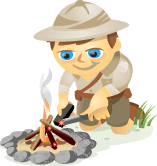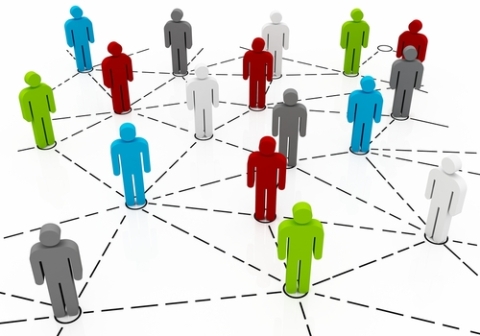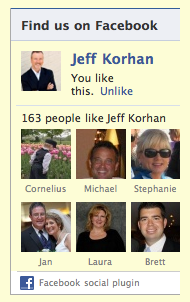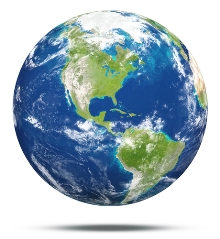 Are you familiar with the term social graph? Can you easily describe what one is, and better yet, why they're significant to the marketing of your business on the social web?
Are you familiar with the term social graph? Can you easily describe what one is, and better yet, why they're significant to the marketing of your business on the social web?
Understanding the concept of social graphs will not only enhance your proficiency with social media marketing today, it will also help you foresee emerging trends. This will significantly help you be fully prepared when new web technologies are launched.
The term social graph was first used a few years ago by Facebook CEO Mark Zuckerberg, specifically in reference to the Facebook platform. Your social graph is a digital map of your personal identity, your primary Facebook friends and everything you share with them.
That definition has since been expanded to include other platforms, such as Twitter, Flickr and even Google. So, to be clear, you have many overlapping social graphs. This social data is of great interest to businesses that are trying to connect with you, and should be of equal interest to you for reaching your future customers.

Facebook and the Open Graph
When Facebook launched sweeping changes to their platform on April 21, 2010, social graphs were suddenly thrust into the spotlight. That's when Mark Zuckerberg coined a new term—Open Graph.
The objective of Facebook Open Graph is to integrate all of your social graphs—on Facebook, of course. This is accomplished through the Facebook API, which is a digital handshake that connects your Facebook identity, connections and content with Facebook pages and outside websites and blogs. You probably know it best in its most popular form as the Facebook Like button.

When you Like a Facebook page or site that has embedded the Facebook Like feature, you're instantly connected with everyone else who has Liked that site. You have effectively joined a new community, and now you have the benefit of many new associations.
Unfortunately, the positive side of connecting businesses with consumers in this way was overshadowed by the privacy uproar associated with Open Graph. That has since been remedied by allowing you to control what you share, if anything, with your new community.
If you can integrate millions of social graphs that are rich with personal data, you have a Frankenstein's monster of a database that is infused with social context, and therefore, human-like qualities.
Similar to Frankenstein, the Open Graph is not really human, but it has the possibility to come awfully close as more social data is stitched together. The power of a database that truly emulates human behavior is undeniable. Whatever happens in the future, one thing we're sure of is that day in April was a game-changer for social marketers.
How Social Graphs Tell a Story
Searchable content has always been the foundation of the Internet. Bill Gates is credited with stating that “content is king”—and at the time he said that (he wrote it first), he was right. However, that was before social networking changed the game of search to what it is today; one where context is king.
As your messaging or content on the social web is shared, it gathers context and builds nodal relationships that tell a story. By understanding this, you can more effectively enhance your social graph by creating useful content that favorably represents who you are and what you do best with your expertise.
 Context—Social networks are all about context. Whom you associate with tells a great deal about you. Context not only tells us who you are, but by associations and comparisons, who you are not. You may be very similar to colleagues you associate with, but there is enough data to discern a difference. That association may be what helps you to be discovered, but it is the distinction that will get you hired.
Context—Social networks are all about context. Whom you associate with tells a great deal about you. Context not only tells us who you are, but by associations and comparisons, who you are not. You may be very similar to colleagues you associate with, but there is enough data to discern a difference. That association may be what helps you to be discovered, but it is the distinction that will get you hired.

Discover Proven Marketing Strategies and Tips
Want to go even deeper with your marketing? Check out the Social Media Marketing Podcast! Publishing weekly since 2012, the Social Media Marketing Podcast helps you navigate the constantly changing marketing jungle, with expert interviews from marketing pros.
But don’t let the name fool you. This show is about a lot more than just social media marketing. With over 600 episodes and millions of downloads each year, this show has been a trusted source for marketers for well over a decade.
Nodes—When you map out your social connections, you're essentially connecting the dots. Think of these dots as nodes on a complex matrix. The more nodes there are on your social graph, the more readily you can be defined, and therefore located. Nodes are landmarks or junction points on a map that helps users navigate the unknown and find exactly what they need or want, which ideally is your business.
Get World-Class Marketing Training — All Year Long!
Are you facing doubt, uncertainty, or overwhelm? The Social Media Marketing Society can help.
Each month, you’ll receive training from trusted marketing experts, covering everything from AI to organic social marketing. When you join, you’ll also get immediate access to:
- A library of 100+ marketing trainings
- A community of like-minded marketers
- Monthly online community meetups
- Relevant news and trends updates
Sharing—Sharing on the social web is what creates nodes. If you share content that someone finds useful, they're likely to share it with their community, thereby connecting you with their friends—which creates even more nodes.
Why Social Search Is a Game-Changer
When Facebook introduced its Open Graph, Mark Zuckerberg made the statement that if we can take the social graphs of a multitude of social networking or sharing sites, we could “create a web that's smarter, more social, more personalized, and more semantically aware.”
A semantically aware web takes advantage of relationships and associations. You've already experienced how social semantic search works if you've made multiple purchases on Amazon. They understand your preferences and they cross-link them with the preferences of people whose social graphs are similar to yours.
As new technologies are integrated with this growing body of social data, you can expect search capabilities to rise to breathtaking levels, giving more accurate, more personal and timelier search results.
Here are some steps you can take to create a representative social graph:
Create Social Objects—In addition to relationships with people, you also have relationships with objects that further define your social graph. Social objects are anything that is searchable on the web. This obviously includes people, but also images, videos and music clips. All of these objects interact to tell a story.
Fill in the Gaps—As social graphs are merged, they become mutually more descriptive and complete. Yet for most of us, our social graphs are largely empty space. This is why it's important to be actively engaged and share on the social networks, both on a personal and professional level. When you do this, you're managing your destiny by building your social graph, which is always best accomplished with your direct involvement.
Consider Location and Time—Social graphs are digital maps that lead us to places. As social graphing is accomplished more frequently in real time and location, better decisions become possible. While there may a number of businesses like yours that are suited to someone doing a search, the person is more likely to choose you if you've recently engaged in conversations that keep your social graph fresh and relevant.
What This Means for Business
At the recent Web 2.0 Summit, Mark Zuckerberg said, “Over the next five years every industry will have to redesign itself around social.” This is a statement that I believe holds a great deal of merit. Businesses need to realize that social is not just changing how you should market, but even how you'll be doing business in the future if you expect to prosper.
It remains to be seen whether Open Graph will become a reality. While the technology is available, there are political and economic boundaries that prevent it from readily happening. Nevertheless, what's trending is typically going to happen at some point in the future.
Here are some likely possibilities:
The Future Web Is More Personal
Let's face it, people are interested in people. Human interactions of all kinds add context that illuminates, clarifies and cuts through the clutter. There is no question that semantic search will transform our roles as both consumers and business professionals.
The Future Web Is More Intelligent
Every piece of data that gets added to every social graph makes the entire system more intelligent. The more the system knows, the more discerning it will be. It becomes a better decision-maker. What is Microsoft's Bing, which also happens to power Facebook search? A decision engine.
The Future Web Is More Open

Imagine a web that has perfect access to information—a social web that is a digital copy of our physical world.
While this may sound like science fiction to some, could you have imagined 10 years ago that you would someday be carrying a handheld device that would help you find a business, navigate your travel there in real time, let you know which of your friends has recently visited and what recommendations they left for you?
What do you think? Is science fiction now becoming science? What challenges and possibilities do you see? Let us know your comments in the box below.
All images from Shutterstock
Attention Agency Owners, Brand Marketers, and Consultants

Introducing the Marketing Agency Show–our newest podcast designed to explore the struggles of agency marketers.
Join show host and agency owner, Brooke Sellas, as she interviews agency marketers and digs deep into their biggest challenges. Explore topics like navigating rough economic times, leveraging AI, service diversification, client acquisition, and much more.
Just pull up your favorite podcast app, search for Marketing Agency Show and start listening. Or click the button below for more information.

